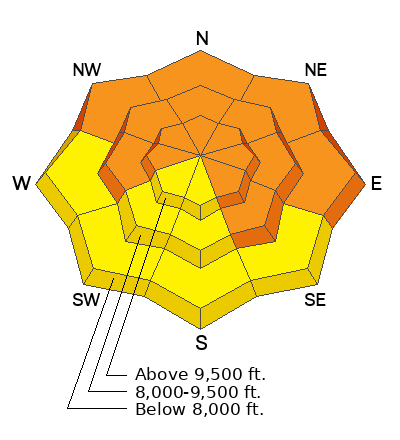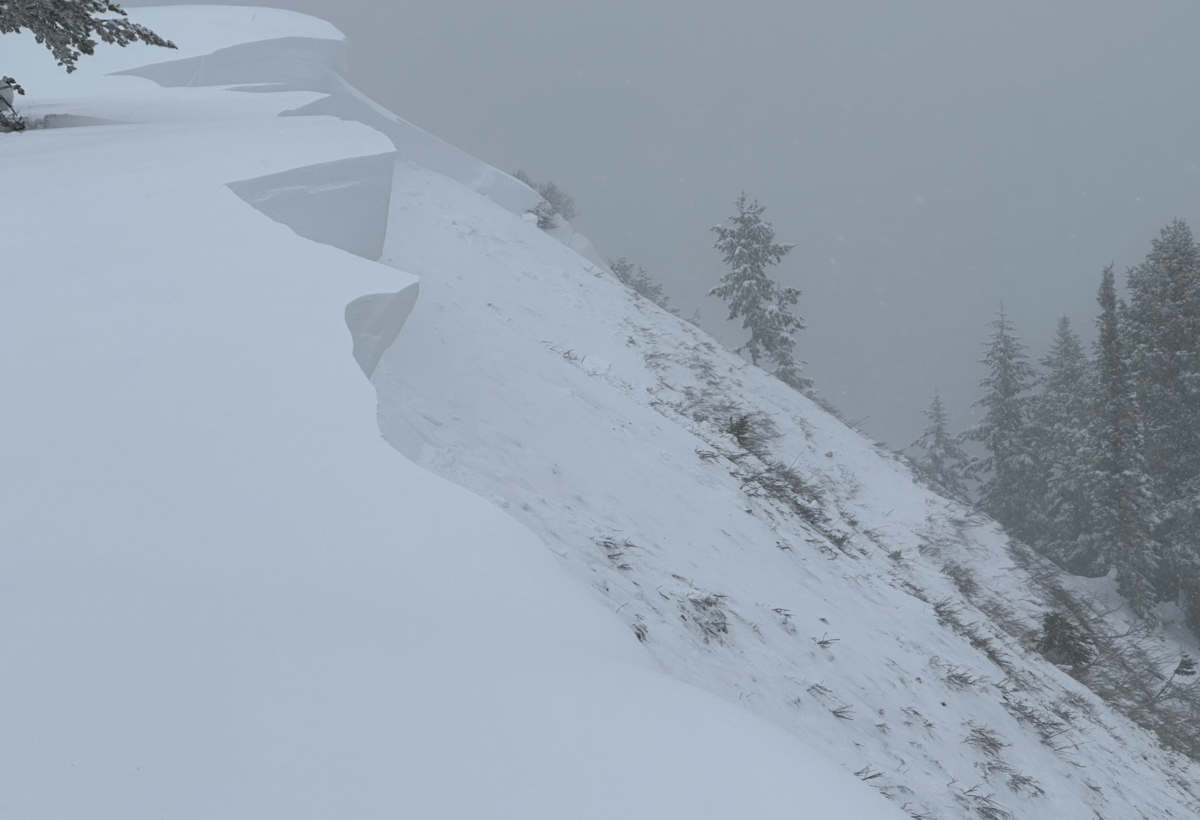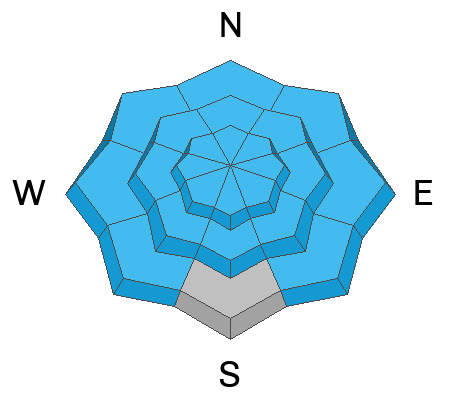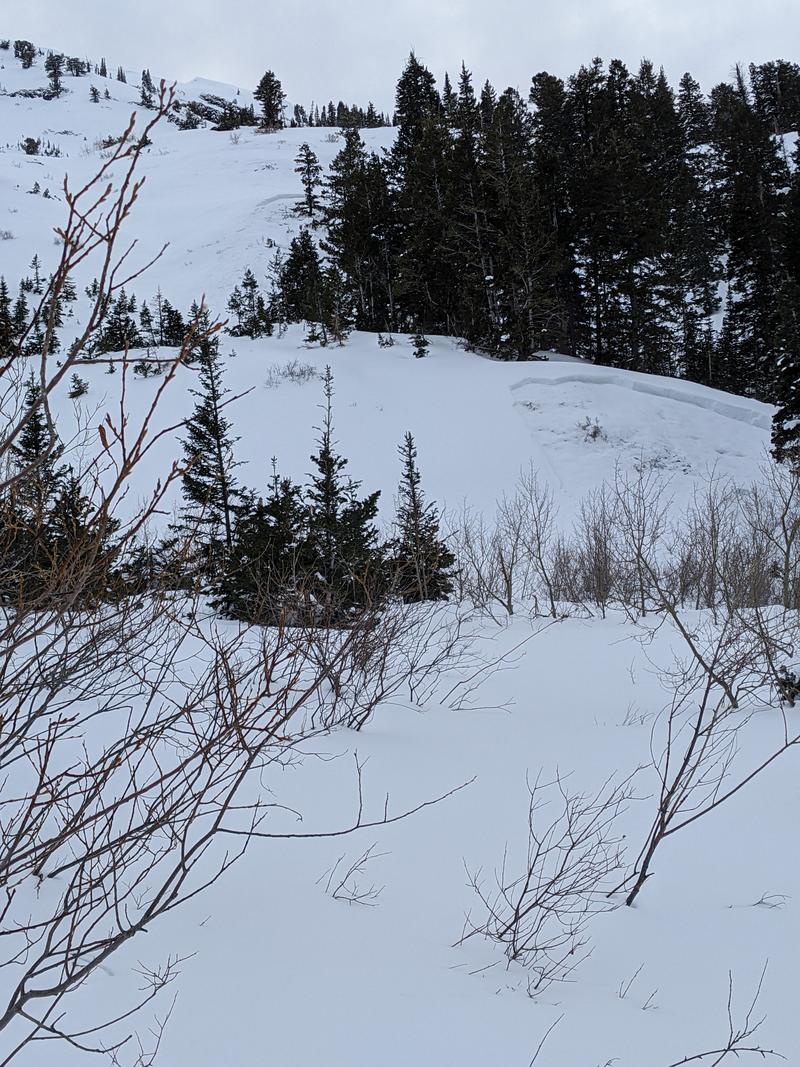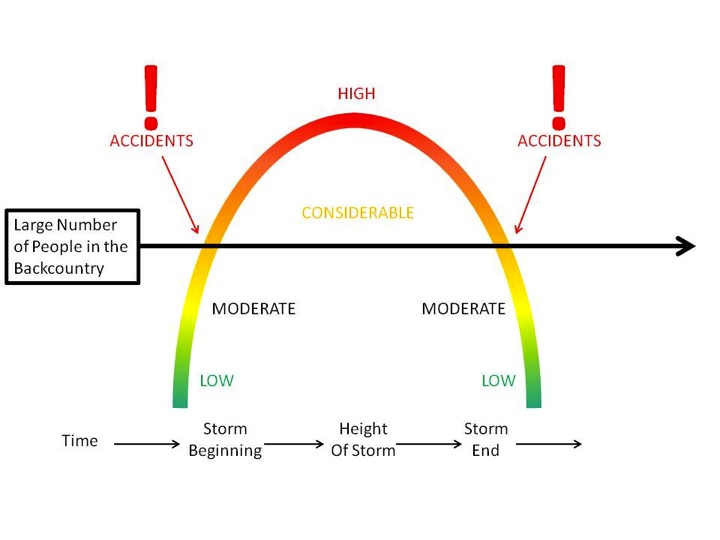Skies are partly cloudy up high with a low cloud deck down low. Some areas are reporting some light drizzle.
Winds are light from the south; temperatures are in the upper 20s.
For today, we'll have some patches of blue and partly cloudy skies here, mostly cloudy skies there. Winds will be light from the southwest; temps will be in the upper 20s to low 30s.
The Outlook: Purgatory - a few weak weather systems move through from the west this week. We may see a lost snowflake or two tonight through mid week with perhaps a few more organized inches of snow on Thursday. My 'half-full" perspective is that we won't see much wind or sun to damage the snow surfaces (more than what the light rain did to 6600' or so the last couple of days).
In the upper American Fork drainage above Forest Lake, a ski party remotely triggered a cornice fall which in turn triggered a monster avalanche to the ground. The hard slab avalanche failed on a persistent weak layer of early season depth hoar 4-6' deep (width unknown) on a steep northeast facing slope at 9200'. In a heavily wind loaded part of the crown-face, the depth was estimated at 15' deep. (Unsure of terrain? Check the
WBSkiing map and search for
Peak 9851' near Terraces, just west of Mill Canyon Peak.)
Be sure to check all the avalanche activity
HERE. 
